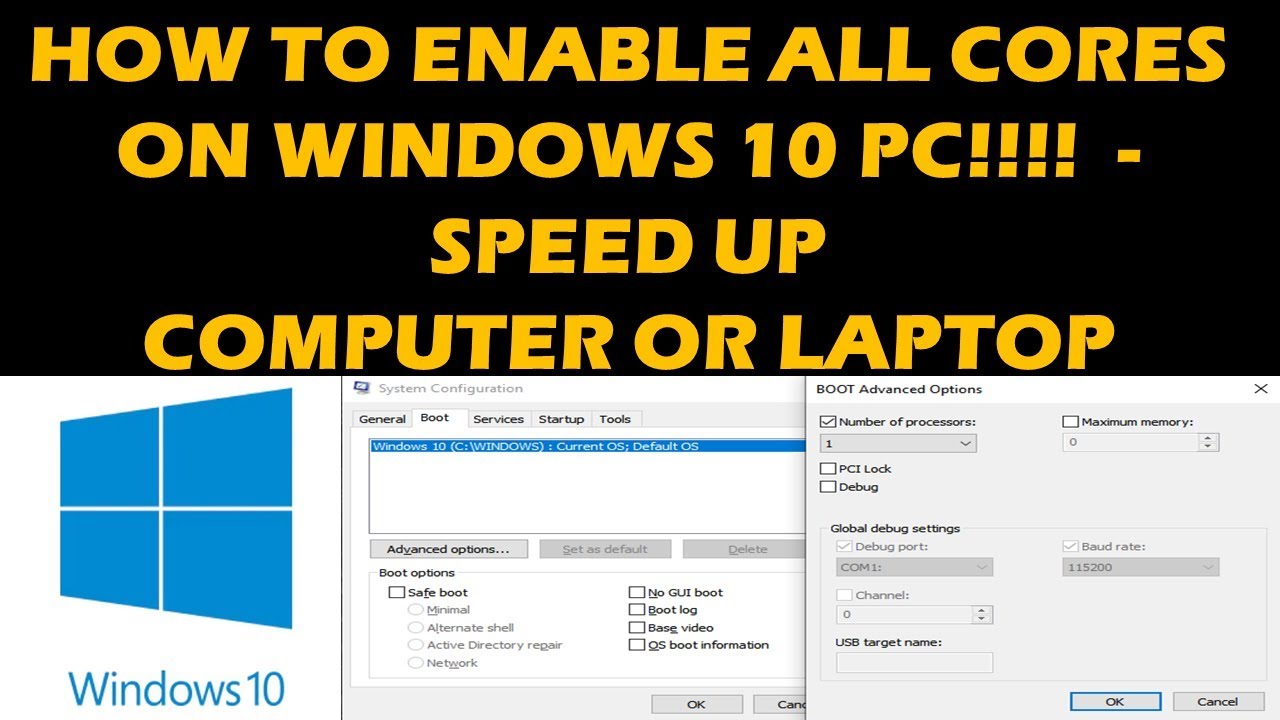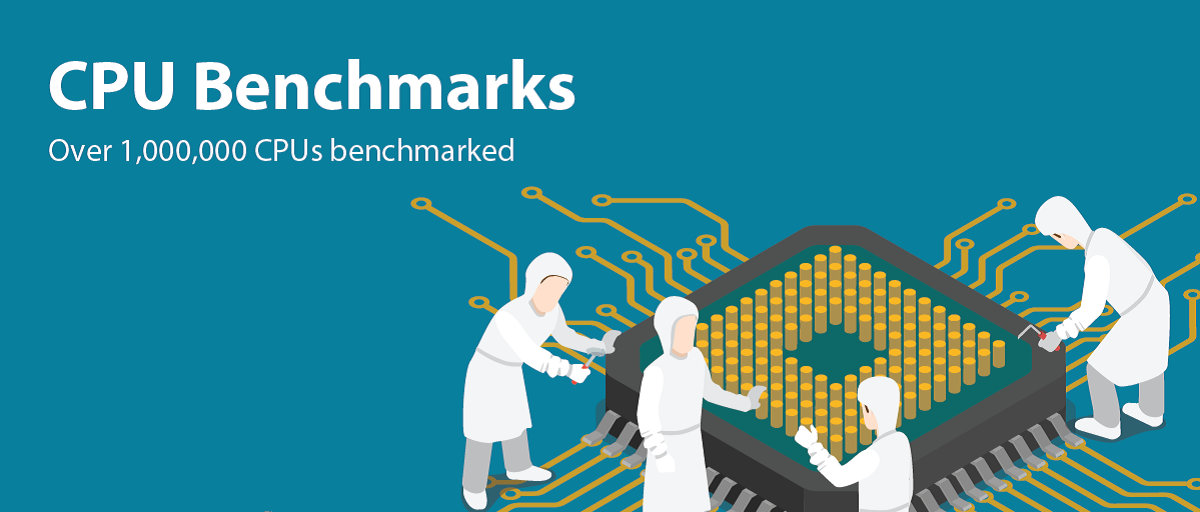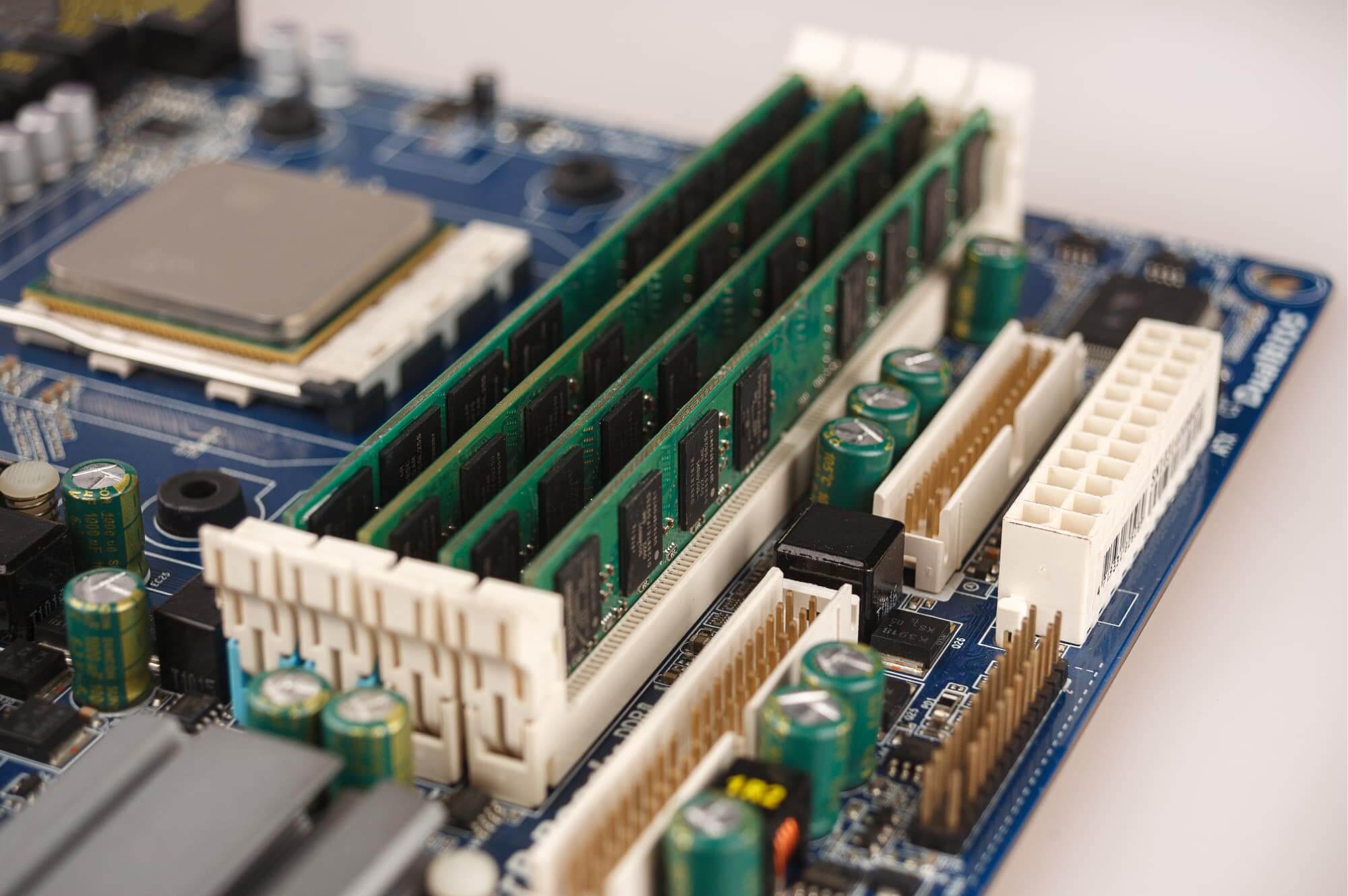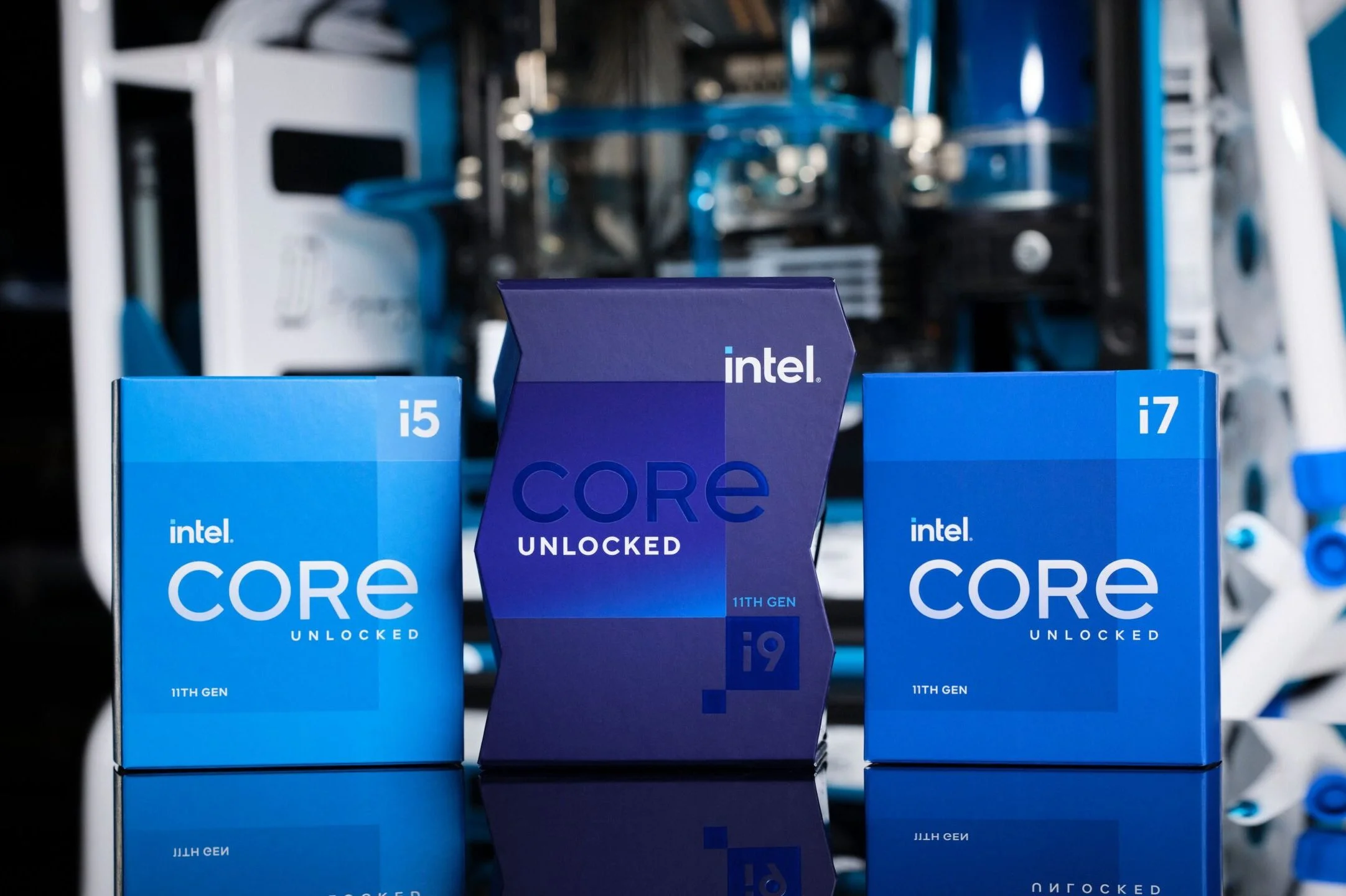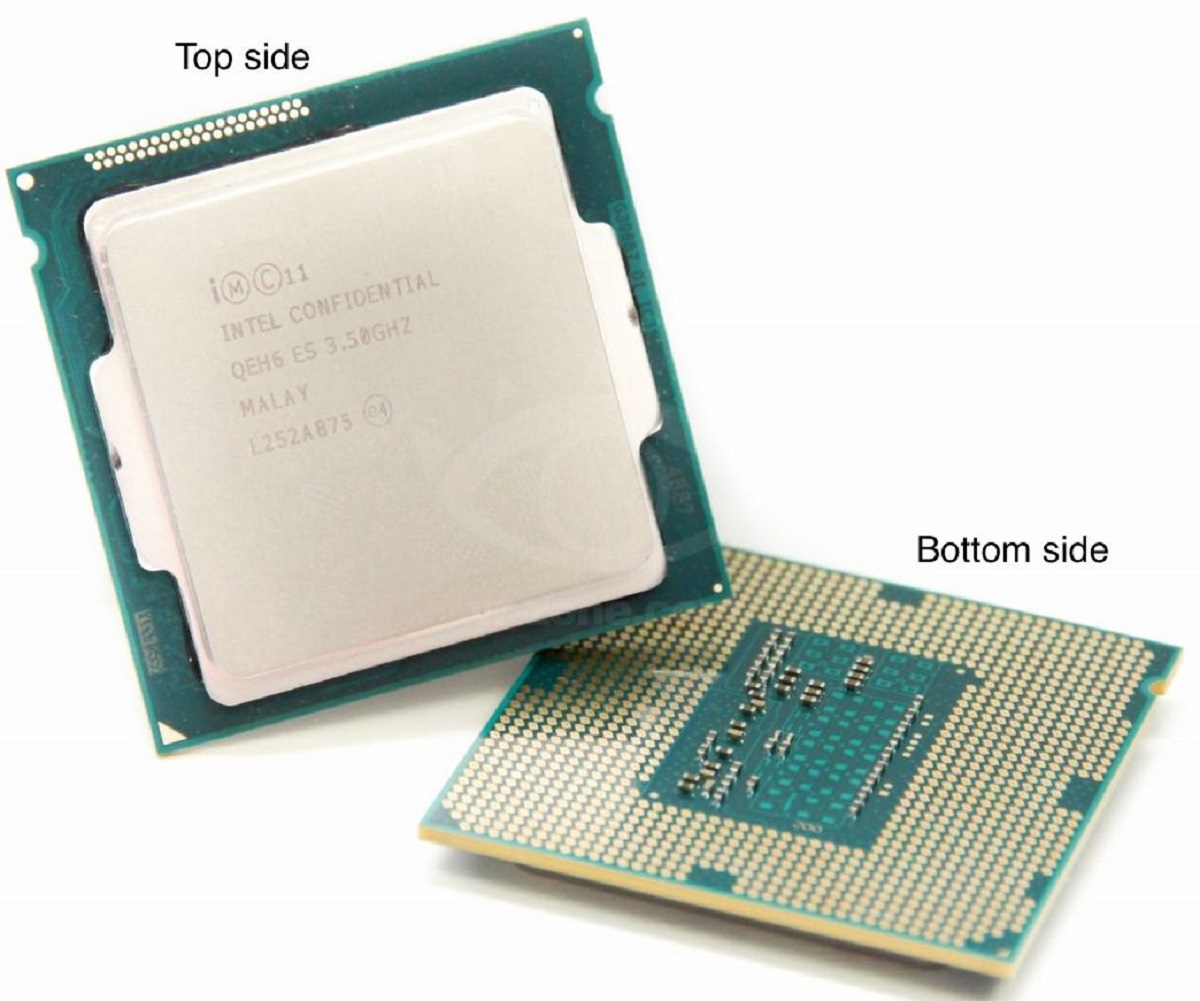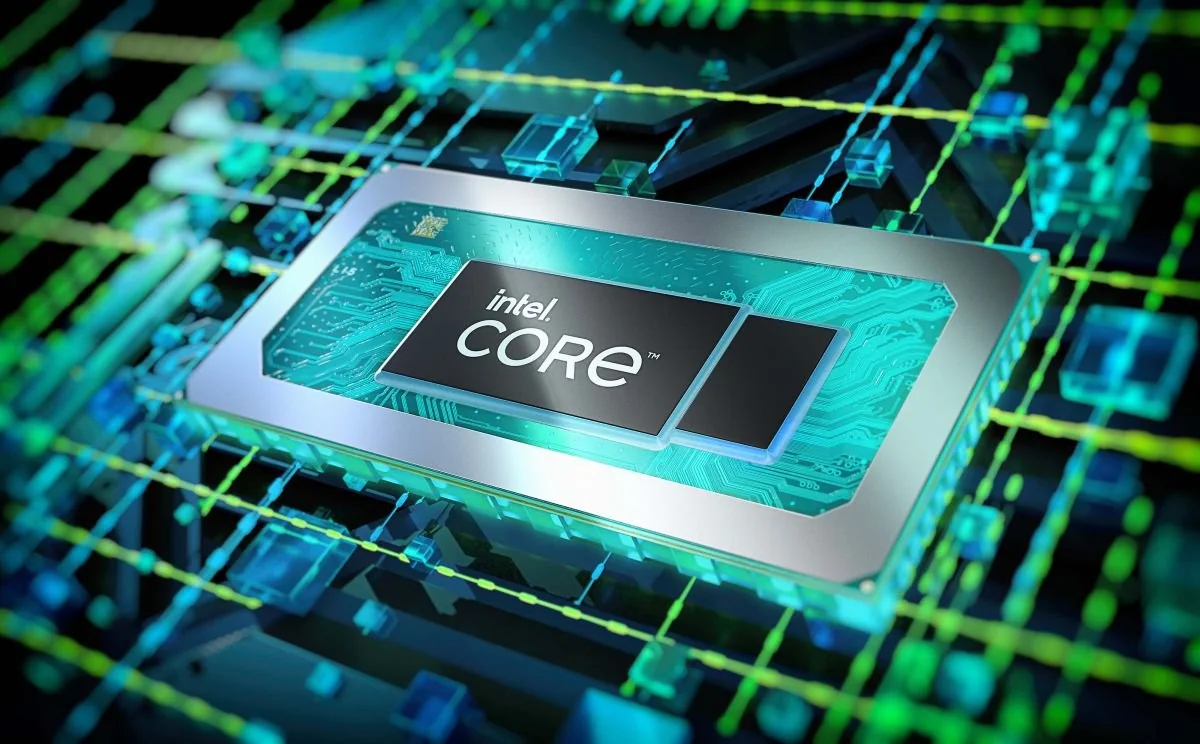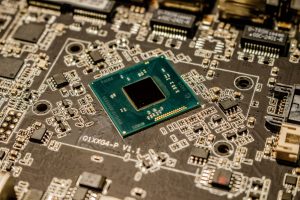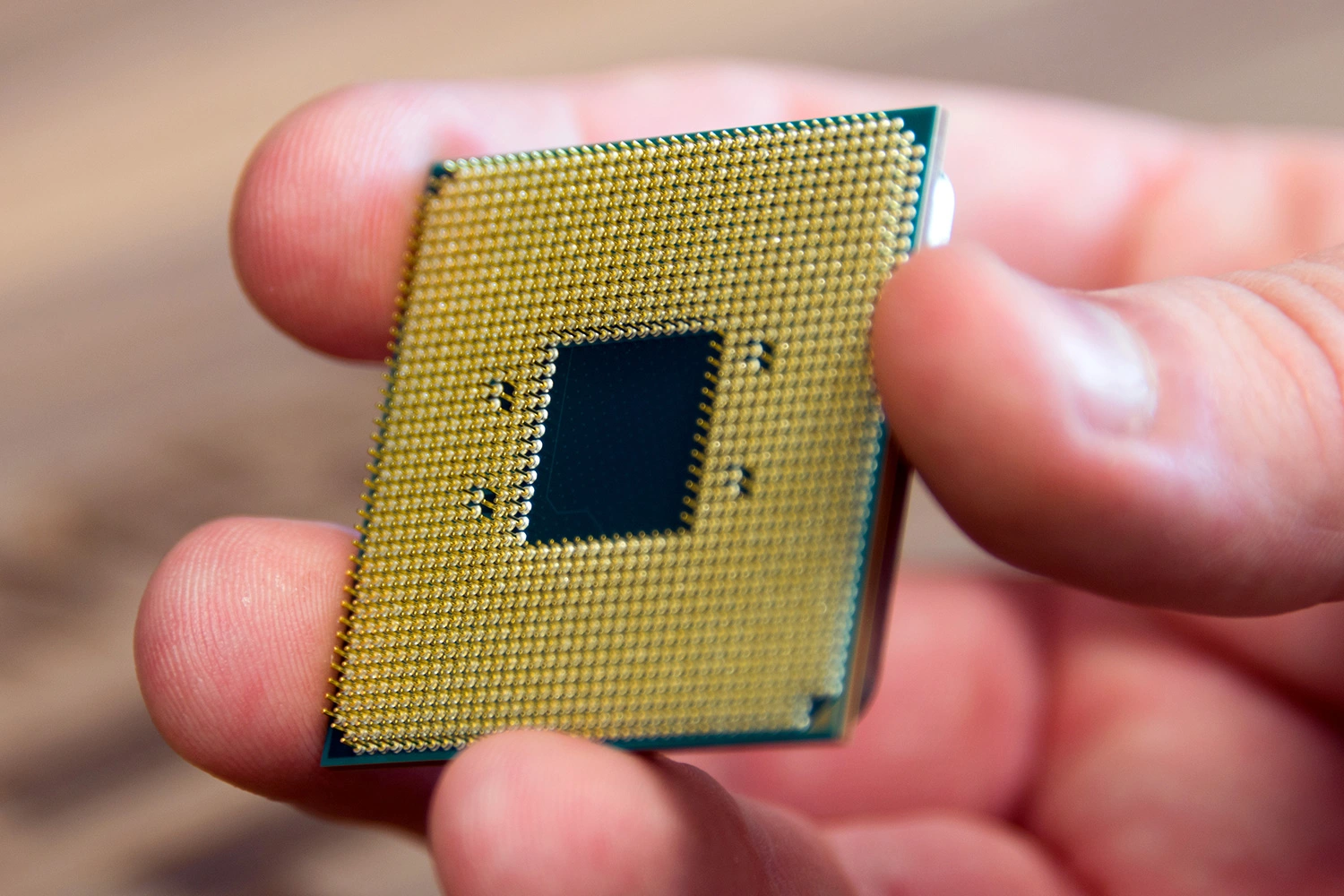Introduction
Modern-day computers have become incredibly powerful machines, capable of handling complex tasks and running multiple programs simultaneously. At the heart of these computers lies the central processing unit (CPU), which plays a crucial role in executing instructions and performing calculations.
One important aspect of the CPU is its core. A CPU core can be thought of as an individual processing unit within the CPU itself. While older CPUs typically had a single core, the advancement in technology has led to the development of multi-core CPUs, which have multiple processing units integrated into a single chip.
Using all the cores on a CPU allows for better multitasking, improved performance, and enhanced efficiency. By utilizing the full potential of every core, you can distribute workloads more evenly and handle resource-intensive tasks with ease.
In this article, we will explore why using all cores on a CPU is essential, how to check if all cores are enabled on different operating systems, and how to optimize programs to make full use of these cores. By the end, you’ll have a deeper understanding of the benefits and considerations involved when leveraging the power of all cores on your CPU.
What is CPU?
The CPU, or central processing unit, is often referred to as the “brain” of a computer. It is a critical component responsible for executing instructions and performing calculations that drive the overall functioning of the system.
The CPU carries out the basic arithmetic, logical, control, and input/output (I/O) operations of a computer. It fetches instructions from the computer’s memory, decodes them, and executes them to perform tasks. These tasks can range from simple calculations to complex computations required by applications.
Inside a CPU, you’ll find various functional units, including the arithmetic logic unit (ALU), control unit, and registers. The ALU is responsible for performing arithmetic and logical operations, such as addition, subtraction, and comparisons. The control unit coordinates and controls the activities within the CPU, ensuring that instructions are executed in the proper sequence. Registers are small, high-speed storage areas within the CPU used to hold data and instructions during processing.
Over the years, CPUs have evolved significantly in terms of speed, efficiency, and architectural design. From the early single-core processors, CPUs have now transitioned to multi-core designs, enabling computers to handle multiple tasks simultaneously.
It’s important to note that the CPU is just one component of a computer’s overall architecture. Other crucial components, such as memory, storage, and input/output devices, work together with the CPU to provide a seamless user experience. However, the CPU’s performance and capabilities play a significant role in determining the overall speed and efficiency of a computer system.
What are CPU Cores?
A CPU core is an independent processing unit within the central processing unit (CPU) that can execute instructions and perform calculations. Each core acts as a separate processing unit, capable of handling its own set of tasks.
Traditional CPUs had a single core, which meant they could only handle one task at a time. However, the development of multi-core processors revolutionized computing by allowing multiple tasks to be executed simultaneously, improving overall performance and efficiency.
Each CPU core consists of three key components: an arithmetic logic unit (ALU), a control unit, and a cache. The ALU performs mathematical calculations and logical operations, such as addition, subtraction, and comparisons. The control unit fetches instructions from the computer’s memory, decodes them, and coordinates the execution of these instructions. The cache is a small, high-speed memory that stores frequently used data, allowing for faster access and improved performance.
Multi-core CPUs are designed to handle parallel processing, enabling multiple tasks to be executed simultaneously, thus increasing the overall computing power. For example, a quad-core CPU has four independent cores, while an octa-core CPU has eight. The more cores a CPU has, the more tasks it can handle efficiently, resulting in faster processing speeds and better multitasking capabilities.
It’s important to note that the number of cores a CPU has does not necessarily determine its performance. Other factors, such as clock speed, cache size, and architecture, also play significant roles in determining the overall performance of a CPU. Additionally, not all software is designed to take full advantage of multiple cores, so the benefits of having more cores may vary depending on the specific applications or tasks being executed.
In summary, CPU cores are independent processing units within a CPU that allow for parallel processing and improved multitasking capabilities. They enable computers to handle multiple tasks simultaneously, resulting in increased performance and efficiency.
Understanding Multi-Core CPUs
Multi-core CPUs have become commonplace in modern computers, offering significant advantages over single-core processors. To fully grasp their impact, it’s important to understand how multi-core CPUs work and why they are beneficial.
A multi-core CPU is essentially a single processor chip that houses multiple processing cores. These cores can simultaneously execute instructions and perform calculations, allowing for parallel processing. This means that tasks can be divided among the cores, which can work simultaneously to complete them more efficiently.
With multi-core CPUs, the operating system can assign different tasks to different cores, leveraging their collective power to handle multiple processes simultaneously. For example, one core can handle web browsing while another core handles video rendering, ensuring a smoother and more responsive computing experience.
One key advantage of multi-core CPUs is their ability to improve multitasking. With more cores, the CPU can handle multiple tasks with ease, reducing delays and increasing overall efficiency. This is particularly beneficial for resource-intensive applications that require significant processing power, such as video editing, 3D rendering, and gaming.
However, it’s worth noting that not all applications can fully utilize multiple cores. Some applications are primarily single-threaded, meaning they can only effectively use one core at a time. In such cases, the additional cores may remain underutilized. However, many modern applications, including operating systems and productivity software, are multi-threaded and can take advantage of multiple cores.
Another important aspect of multi-core CPUs is their impact on power consumption and heat generation. By distributing workloads among multiple cores, each core can operate at lower frequencies, resulting in reduced power consumption and heat output. This helps in creating more energy-efficient and cooler-running systems.
Overall, understanding multi-core CPUs is essential for maximizing the capabilities of modern computers. By harnessing the power of multiple cores and optimizing software to take advantage of them, users can enjoy improved performance, multitasking capabilities, and energy efficiency.
Why Use All Cores on CPU?
Using all the cores on a CPU offers several advantages and can significantly enhance the performance and efficiency of your computer system. Here are some compelling reasons to utilize all the cores on your CPU:
1. Improved Multitasking: By using all the available cores, you can efficiently handle multiple tasks simultaneously. This is particularly beneficial when running resource-intensive applications, such as video editing software or virtualization tools, as it ensures smooth and uninterrupted multitasking.
2. Enhanced Speed and Performance: Utilizing all cores allows you to distribute workloads evenly, accelerating the processing speed of your system. Each core can independently execute instructions, resulting in faster calculations and reduced task execution time.
3. Enhanced Gaming Experience: Many modern games are designed to take advantage of multi-core CPUs. By enabling all cores, you can ensure smoother gameplay, faster loading times, and improved overall gaming performance.
4. Efficient Resource Allocation: Allowing all cores to work together enables better resource allocation. Applications can be assigned to different cores, preventing a single core from becoming overloaded. This helps to maintain system stability and avoids performance bottlenecks.
5. Increased Software Compatibility: With multi-core CPUs becoming the norm, software developers are increasingly optimizing their applications for multi-threaded performance. By utilizing all cores, you ensure compatibility with the latest software releases and take advantage of their optimized performance.
6. Energy Efficiency: While it may seem counterintuitive, using all cores on a CPU can actually improve energy efficiency. With workload distribution across multiple cores, individual cores can operate at lower frequencies, consuming less power. This can result in energy savings and reduced heat generation.
7. Future-Proofing: As technology continues to advance, reliance on multi-core CPUs is expected to increase. By utilizing all cores now, you future-proof your system and ensure compatibility with upcoming software and applications that may rely on multi-threaded performance.
By leveraging the power of all cores on your CPU, you can unlock the full potential of your system, enjoying improved multitasking efficiency, faster processing speeds, and enhanced compatibility with modern software. Whether you are a professional performing resource-intensive tasks or a gamer seeking superior performance, enabling all cores can make a noticeable difference in your computing experience.
Checking and Enabling All Cores on Windows
Ensuring that all cores on your CPU are enabled and functioning properly is essential for maximizing performance on a Windows system. Here are the steps to check and enable all cores:
1. Task Manager: The Task Manager in Windows provides valuable information about your CPU and the number of active cores. Right-click on the taskbar and select “Task Manager”. In the Task Manager window, go to the “Performance” tab. Under the “CPU” section, you will see the number of cores listed as “Logical Processors”. Make sure that the number matches the total number of cores your CPU has.
2. BIOS Settings: The BIOS (Basic Input/Output System) is responsible for managing the hardware settings on your computer, including the CPU. To access the BIOS settings, restart your computer and look for the prompt to enter the BIOS. This is typically displayed on the screen during the boot process and is often the “Del” or “F2” key. Once in the BIOS, navigate to the “CPU Configuration” or a similar section. Look for an option related to CPU cores, such as “Core Multiprocessing” or “Core Unlocking”. Enable it if it is disabled or set it to the maximum number of cores if available.
3. Windows Power Plan: Windows power plans can impact CPU performance, including core utilization. To adjust the power plan settings, go to the control panel and search for “Power Options”. Open the “Power Options” window and select the power plan you are using. Click on “Change plan settings” and then on “Change advanced power settings”. Look for “Processor power management” in the advanced settings and expand it. Under “Minimum processor state” and “Maximum processor state”, ensure that the values are set to 100% for all power plans.
4. Third-Party Utilities: There are also third-party utilities available that provide more advanced control over CPU core settings. These utilities can provide detailed information about your CPU and enable you to configure core utilization. Some popular options include CPU-Z, CoreTemp, and Ryzen Master (for AMD processors). Download and install the utility of your choice, and use it to check and adjust core settings as needed.
By following these steps and ensuring that all cores are enabled and functioning correctly, you can optimize the performance of your Windows system. Remember to consult your CPU’s documentation or manufacturer’s website for specific instructions and recommendations related to your processor.
Checking and Enabling All Cores on Mac
If you are using a Mac computer and want to ensure that all cores on your CPU are enabled and functioning properly, you can follow these steps:
1. System Information: The System Information utility on macOS provides detailed information about your computer’s hardware, including the CPU and the number of active cores. To access System Information, click on the Apple menu in the top-left corner of the screen, then select “About This Mac”. In the About This Mac window, click on “System Report”. In the System Information window, under the Hardware section, select “Processor”. Look for the “Cores” entry and ensure that the number matches the total number of cores your CPU has.
2. Terminal Command: You can also use the Terminal to check the number of active cores on your Mac. Open the Terminal application by going to Applications > Utilities > Terminal. In the Terminal window, type the following command: sysctl -n machdep.cpu.core_count. Press Enter, and the number of active cores will be displayed.
3. Activity Monitor: The Activity Monitor is a built-in utility on macOS that provides real-time information about the performance and resource usage of your Mac. To open Activity Monitor, go to Applications > Utilities > Activity Monitor. In the Activity Monitor window, click on the “CPU” tab. Locate the “CPU Usage History” section and check if all the cores are showing activity. Each core will be represented by a separate graph. If all cores are active and showing utilization, this indicates that they are enabled.
4. Third-Party Utilities: There are also third-party utilities available for macOS that can provide more advanced information about your CPU and enable you to monitor and adjust core utilization. Utilities like Intel Power Gadget and iStat Menus offer detailed CPU monitoring and configuration options. Download and install the utility of your choice, and use it to check and adjust core settings as needed.
By following these steps, you can verify if all cores on your Mac’s CPU are enabled and functioning correctly. Having all cores enabled ensures optimal performance and efficient multitasking on your system. If you encounter any issues or need further assistance, refer to the documentation provided by your CPU’s manufacturer or seek support from Apple.
Checking and Enabling All Cores on Linux
If you are using a Linux operating system and want to check if all cores on your CPU are enabled and functioning properly, you can follow these steps:
1. Command Line: Linux provides various command-line utilities for checking CPU information. One commonly used utility is lscpu. Open a terminal and type lscpu followed by the Enter key. This command will display detailed information about your CPU, including the number of cores. Look for the “Core(s) per socket” or “Core(s) per CPU” entry to verify the number of cores on your CPU.
2. /proc/cpuinfo: Another method is to check the /proc/cpuinfo file. Open a terminal and run the command cat /proc/cpuinfo. This command will display information about each CPU core in your system. Look for the “cpu cores” field to verify the number of cores on your CPU.
3. System Monitoring Tools: Linux offers various system monitoring tools that can provide information about CPU cores. One such tool is htop. Install htop using your package manager, then run htop in the terminal. It will display real-time information about your system, including the number of cores and their utilization.
4. BIOS Settings: In some cases, especially on custom-built PCs, you may need to check the BIOS settings to ensure all cores are enabled. Reboot your system and enter the BIOS setup by pressing the appropriate key (often Delete, F2, or F10) during the boot process. Navigate to the CPU settings or a similar section and ensure that the option to enable all cores is selected.
Enabling all cores on Linux is typically not necessary as the Linux kernel automatically detects and utilizes all available cores. However, if you suspect that some cores are not functioning correctly, you can try rebooting your system or updating the kernel to see if it resolves any issues.
By following these steps, you can check if all cores on your Linux system’s CPU are enabled and functioning properly. If you encounter any difficulties or need more advanced options for managing and adjusting core settings, consult the documentation specific to your CPU or seek support from your Linux distribution’s community or forums.
Optimizing Programs to Use All Cores
To fully harness the power of multi-core CPUs, it’s essential to optimize programs to effectively utilize all available cores. By doing so, you can maximize performance and take advantage of the parallel processing capabilities of your CPU. Here are some strategies for optimizing programs:
1. Multi-Threading: Multi-threading is a programming technique that involves dividing a program into multiple threads, each capable of executing tasks independently. By distributing workload across threads, you can ensure that different cores handle different parts of the program simultaneously, enabling parallel processing. Make use of threading libraries or frameworks available in your programming language to implement multi-threading effectively.
2. Task Parallelism: Task parallelism involves breaking down a program into smaller tasks that can be executed independently. These tasks can then be assigned to different threads, allowing for parallel execution on multiple cores. Identify tasks within your program that can be executed concurrently and design your program to take advantage of task parallelism.
3. Load Balancing: When distributing tasks across multiple threads, it’s important to ensure that the workload is evenly balanced. Unequal distribution of tasks can lead to some cores being underutilized while others are overloaded. Implement load balancing techniques to evenly distribute the workload among all available cores for optimal performance.
4. Data Decoupling: When multiple threads access shared data, synchronization overhead can impact performance. Minimize this overhead by decoupling data access and reducing dependencies among threads. This can involve techniques such as using thread-local data or ensuring that shared data structures are accessed in a thread-safe manner.
5. Compiler Optimizations: Modern compilers offer optimization flags and techniques that can automatically parallelize certain parts of your code. Explore compiler documentation and options specific to your programming language to enable compiler optimizations for multi-core execution.
6. Performance Profiling: Profile your program to identify performance bottlenecks and areas that can benefit from parallel execution. Use profiling tools to analyze CPU utilization, thread synchronization, and overall program performance. This will help you pinpoint sections of the code that can be optimized for multi-core execution.
7. Parallel Algorithms and Libraries: Many programming languages and frameworks provide libraries and algorithms specifically designed for parallel and multi-core execution. Utilize these libraries to simplify the development of parallel programs and take advantage of optimized algorithms for multi-threaded execution.
Optimizing programs for multi-core execution requires careful consideration of the specific requirements and constraints of your application. Experimentation and performance testing are crucial to identify the most effective strategies for parallel execution in your specific use case.
By implementing these optimization techniques, you can ensure that your programs make efficient use of all available cores, leading to improved performance, enhanced scalability, and efficient resource utilization on multi-core CPUs.
Benefits and Considerations of Using All Cores on CPU
Utilizing all cores on a CPU can bring several benefits to your computing experience, but it’s also essential to consider certain factors. Let’s explore the advantages and considerations of using all cores on a CPU:
Benefits:
1. Enhanced Performance: By leveraging all available cores, you can achieve higher performance levels, especially when running multiple tasks simultaneously. Each core can independently execute instructions, enabling efficient multitasking and faster processing speeds.
2. Improved Multithreading: Multithreaded applications can fully utilize the multiple cores, allowing for parallel execution and efficient distribution of workloads. This results in better responsiveness and a smoother user experience.
3. Efficient Resource Allocation: By using all cores, you can evenly distribute processing tasks, preventing overload on any single core. This leads to better resource allocation and ensures efficient utilization of the CPU’s capabilities.
4. Enhanced Gaming and Multimedia: Games and multimedia applications can take advantage of multi-core CPUs to deliver smoother gameplay, faster loading times, and improved rendering performance. Enabling all cores can maximize your gaming and multimedia experience.
5. Energy Efficiency: Contrary to common belief, using all cores on a CPU can improve energy efficiency. By distributing workloads across multiple cores, each core operates at lower frequencies, resulting in reduced power consumption and lower heat dissipation.
Considerations:
1. Software Optimization: Not all applications are designed to efficiently utilize multiple cores. Some software may not be optimized for parallel execution, limiting the benefits of using all cores. It’s important to choose software that is designed to make full use of multiple cores or optimize applications yourself to take advantage of parallel processing.
2. Increased Power Consumption: While utilizing all cores can improve energy efficiency, it’s worth noting that activating all cores may increase power consumption compared to when the CPU operates with a lower number of active cores. This consideration is particularly relevant for mobile devices where battery life is a concern.
3. Heat Generation: Enabling all cores on a CPU can lead to increased heat generation. It’s essential to ensure adequate cooling measures are in place to prevent overheating. Proper ventilation and cooling solutions, such as fans or heatsinks, are crucial to maintain optimal CPU temperatures.
4. Hardware and Software Compatibility: Not all CPUs and operating systems support the activation of all cores. It’s important to check the compatibility of your hardware and software to ensure proper functionality when enabling all cores. Additionally, some older applications or legacy systems may not be compatible with multi-core processing.
5. Cost Considerations: CPUs with more cores often come at a higher cost. If the tasks you perform don’t require the added processing power of multiple cores, it may not be cost-effective to invest in a higher-end CPU. Consider your specific computing needs and budget when deciding on the number of cores you require.
By understanding the benefits and considerations of using all cores on a CPU, you can make informed decisions about optimizing your system for parallel processing. By balancing performance, energy efficiency, software compatibility, and budget considerations, you can ensure that you benefit from the capabilities offered by multi-core CPUs.
Conclusion
Utilizing all cores on a CPU is crucial for maximizing performance, improving multitasking capabilities, and achieving more efficient resource utilization. Multi-core CPUs have become the industry standard, offering significant advantages over single-core processors.
Throughout this article, we have explored the importance of utilizing all cores on a CPU and the benefits it brings. By enabling all cores, you can experience enhanced multitasking, improved speed and performance, efficient resource allocation, and an overall better computing experience.
We discussed how to check and enable all cores on different operating systems, including Windows, Mac, and Linux. Whether through task managers, BIOS settings, system monitoring tools, or third-party utilities, it is essential to ensure that all cores are enabled and functioning correctly.
Furthermore, we explored the optimization of programs to effectively utilize all available cores. Techniques such as multi-threading, task parallelism, load balancing, and compiler optimizations can maximize the potential of multi-core CPUs, leading to improved performance and scalability.
However, it’s important to consider certain factors when utilizing all cores. From software optimization and hardware compatibility to power consumption and heat generation, being mindful of these considerations ensures a smooth and effective utilization of your CPU cores.
In conclusion, utilizing all cores on a CPU is essential in today’s computing landscape. By leveraging the power of multi-core CPUs, users can experience improved performance, efficient multitasking, and enhanced efficiency. Understanding how to check, enable, and optimize programs for all cores empowers users to harness the full potential of their CPU and unlock a more powerful computing experience.







